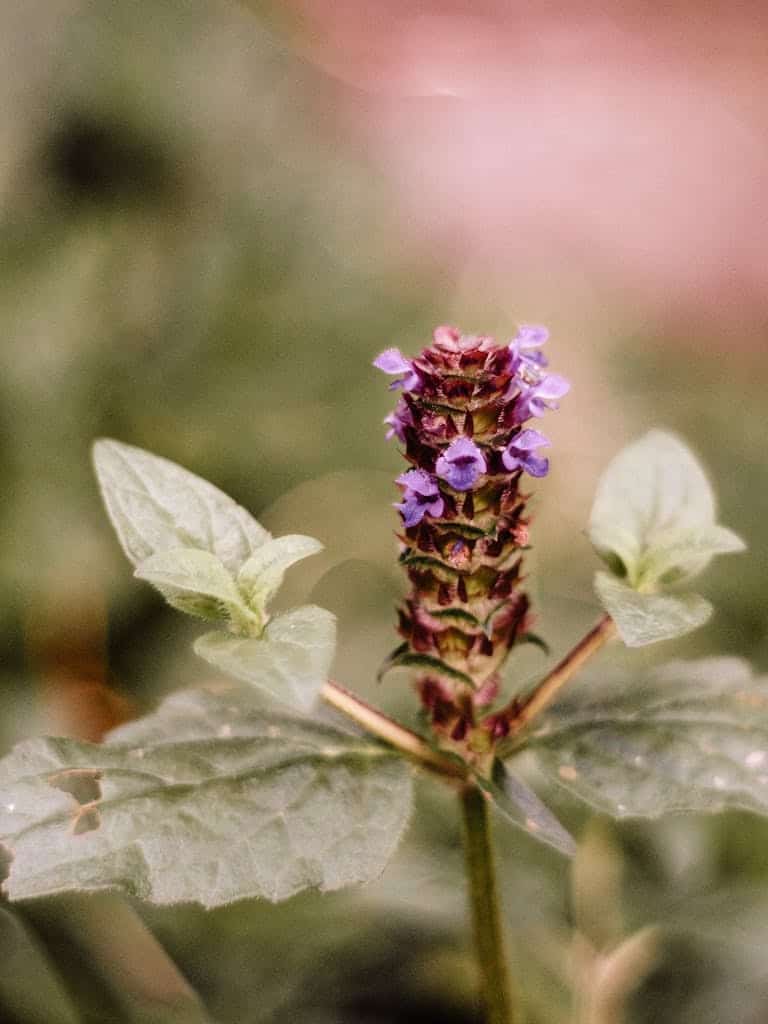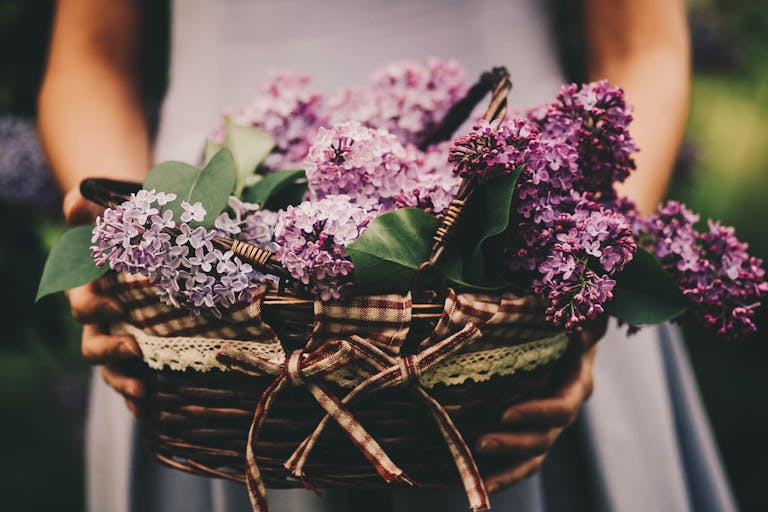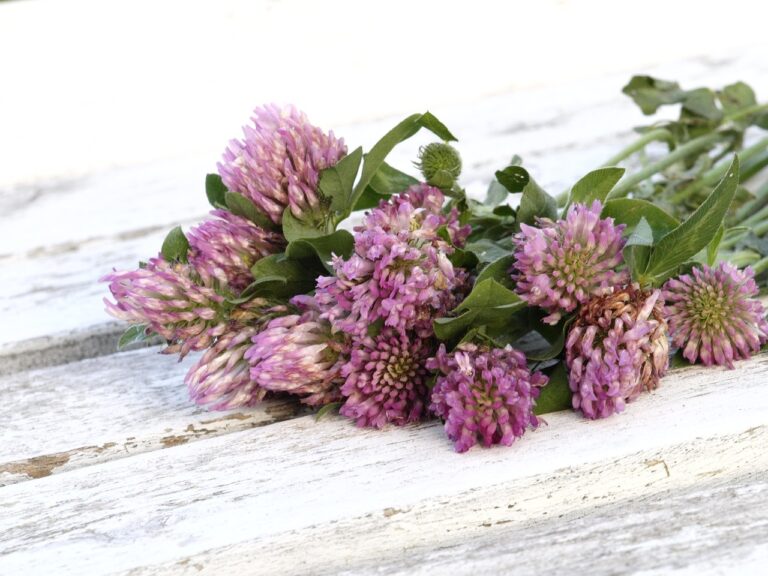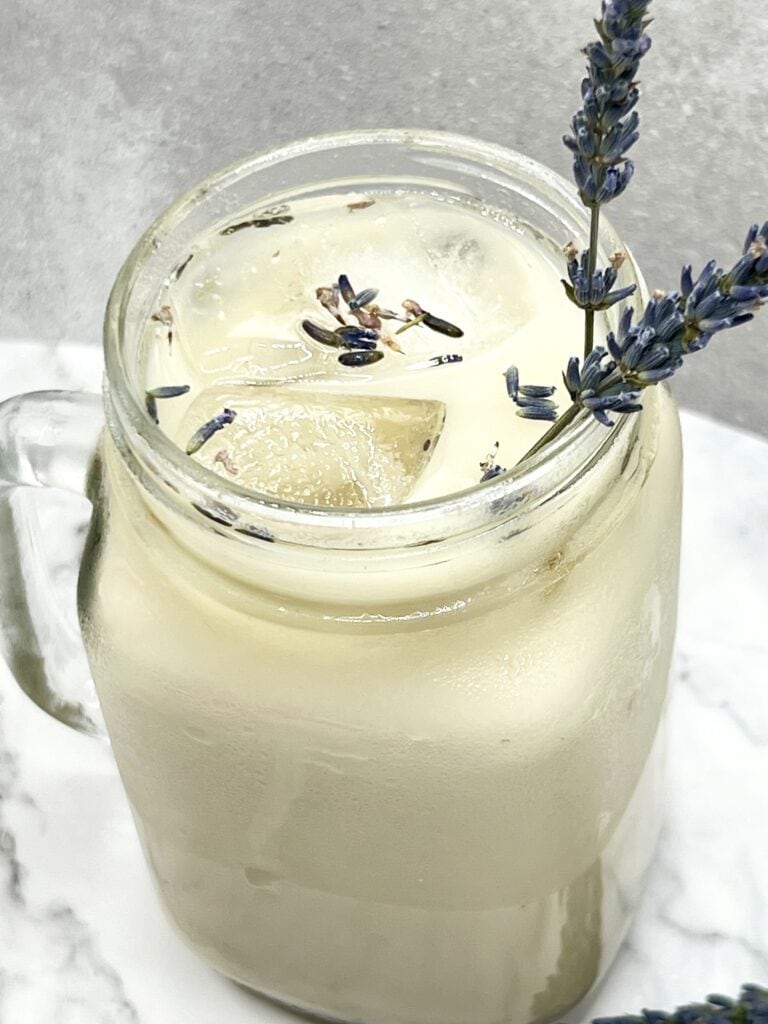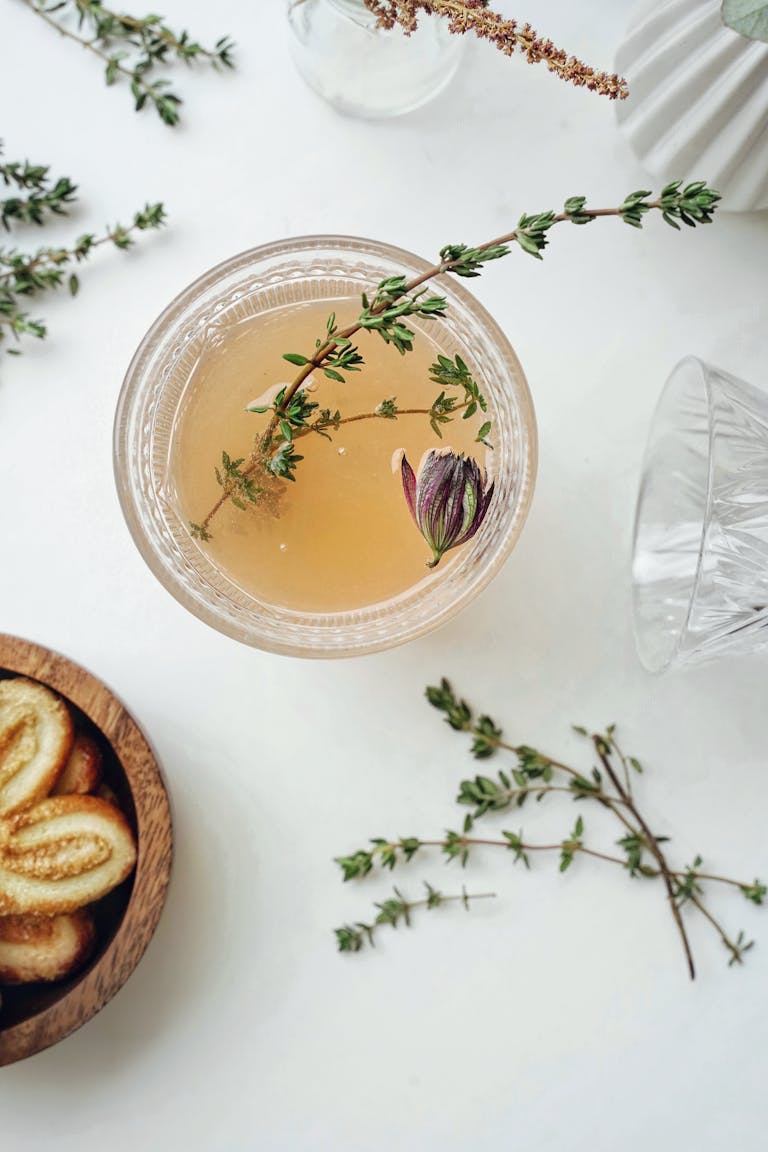Medicinal Yarrow: Healing Benefits, Uses, and How to Grow It
If you’ve ever stumbled upon a delicate, fern-like plant with clusters of tiny white or pink flowers swaying in a field or roadside, you may have met one of nature’s most powerful herbal allies: medicinal yarrow. Known by its Latin name Achillea millefolium, yarrow has been used for thousands of years as a remedy for wounds, fevers, digestion, and more.
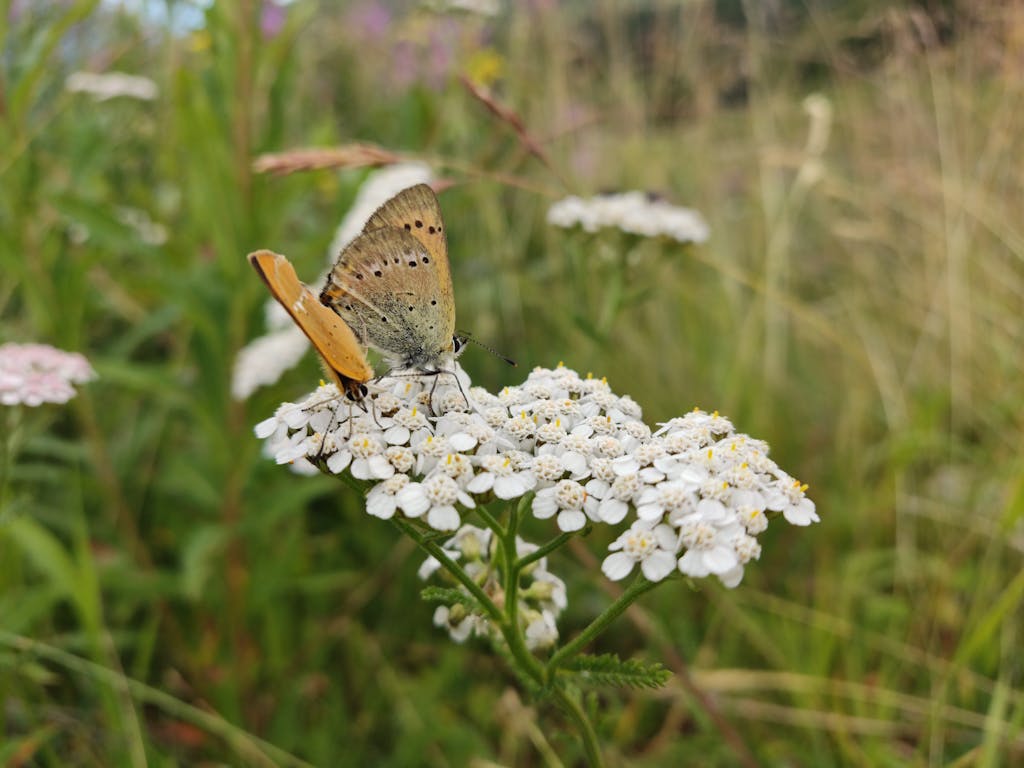
Whether you’re building your herbal apothecary, wildcrafting from your backyard, or just beginning to explore natural remedies, medicinal yarrow deserves a place in your natural remedies. Let’s explore this amazing plant in depth, from its health benefits and traditional uses to harvesting tips and simple recipes.
What Is Medicinal Yarrow?
Yarrow is a perennial herb that grows wild across North America, Europe, and Asia. It’s easy to identify by its feathery, aromatic leaves and umbrella-shaped flower clusters that bloom from early summer through fall. The most common color is white, though you’ll also find it in pinks, purples, and yellows.
The name Achillea millefolium comes from the Greek hero Achilles, who is said to have used yarrow to treat his soldiers’ wounds during battle. “Millefolium” means “thousand-leaved,” referring to its finely divided foliage.
But medicinal yarrow is much more than just a beautiful wildflower, t’s a potent healer with centuries of traditional and modern uses.
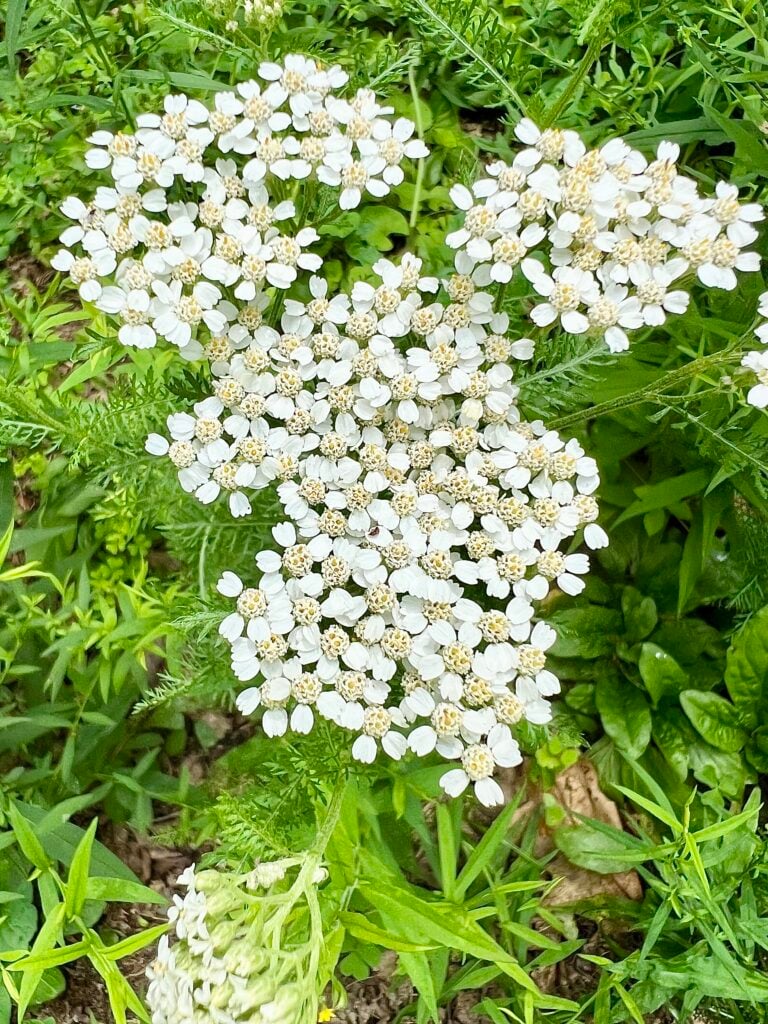
This post contains affiliate links, which means I make a small commission at no extra cost to you.
Medicinal Benefits of Yarrow
Yarrow has a wide range of benefits for the body, and it’s been used in both folk and modern herbal medicine. Here are some of its top healing properties:
1. Wound Healing and Antiseptic Properties
Yarrow is most famous for its ability to stop bleeding. It acts as a styptic, helping to slow or stop blood flow from cuts and wounds. Its antiseptic and anti-inflammatory properties also make it useful for preventing infection and speeding healing.
How to use it: Fresh or dried yarrow leaves can be crushed and applied directly to minor cuts and scrapes as a poultice. You can also infuse yarrow into an oil or salve for long-term storage and easy application.
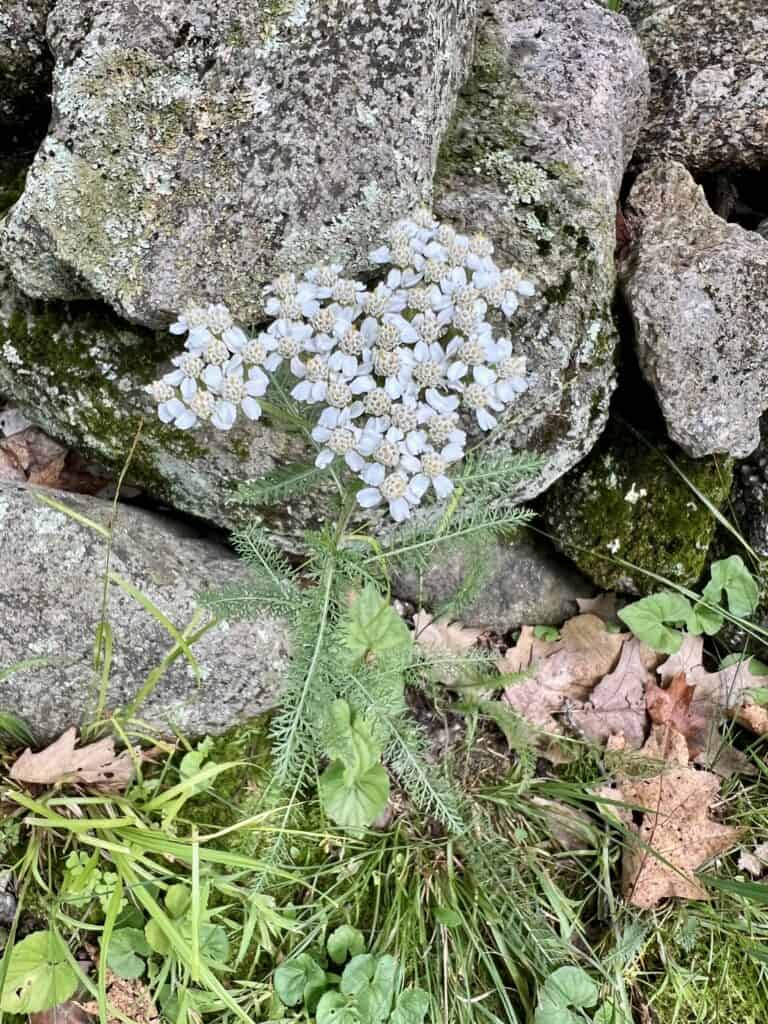
2. Digestive Support
Yarrow stimulates the production of digestive juices and bile, making it a helpful herb for improving digestion and easing bloating, gas, and stomach cramps.
How to use it: A warm cup of yarrow tea before meals can support digestion and prevent discomfort. Blend it with chamomile or peppermint for added soothing effects.
3. Fever and Cold Remedy
Yarrow is known as a diaphoretic—a herb that encourages sweating to help break a fever. It’s often used in combination with elderflower and peppermint for cold and flu relief.
How to use it: Drink hot yarrow tea at the onset of a cold or flu, especially when accompanied by chills or fever.
4. Menstrual Relief
Yarrow has been traditionally used to regulate menstrual cycles, reduce heavy bleeding, and relieve cramps. Its astringent nature helps tone the uterus, while its anti-inflammatory compounds soothe discomfort.
How to use it: A yarrow tincture or tea taken throughout the cycle may help balance hormones and ease period pain.
5. Anti-Inflammatory and Pain Relief
The anti-inflammatory compounds in yarrow make it useful for relieving aches, arthritis, and sore muscles. When used topically, it can reduce swelling and soothe skin irritations like eczema or rashes.
How to use it: Apply a yarrow-infused oil or salve to sore muscles or inflamed joints. You can also soak in a yarrow bath for full-body relief.
How to Identify and Harvest Yarrow
Yarrow is easy to find in the wild if you know what to look for:
- Leaves: Soft, feathery, and finely divided—like a mini fern.
- Flowers: Flat-topped clusters of tiny blooms, usually white but sometimes pink or pale purple.
- Smell: Aromatic, slightly medicinal, similar to chamomile.
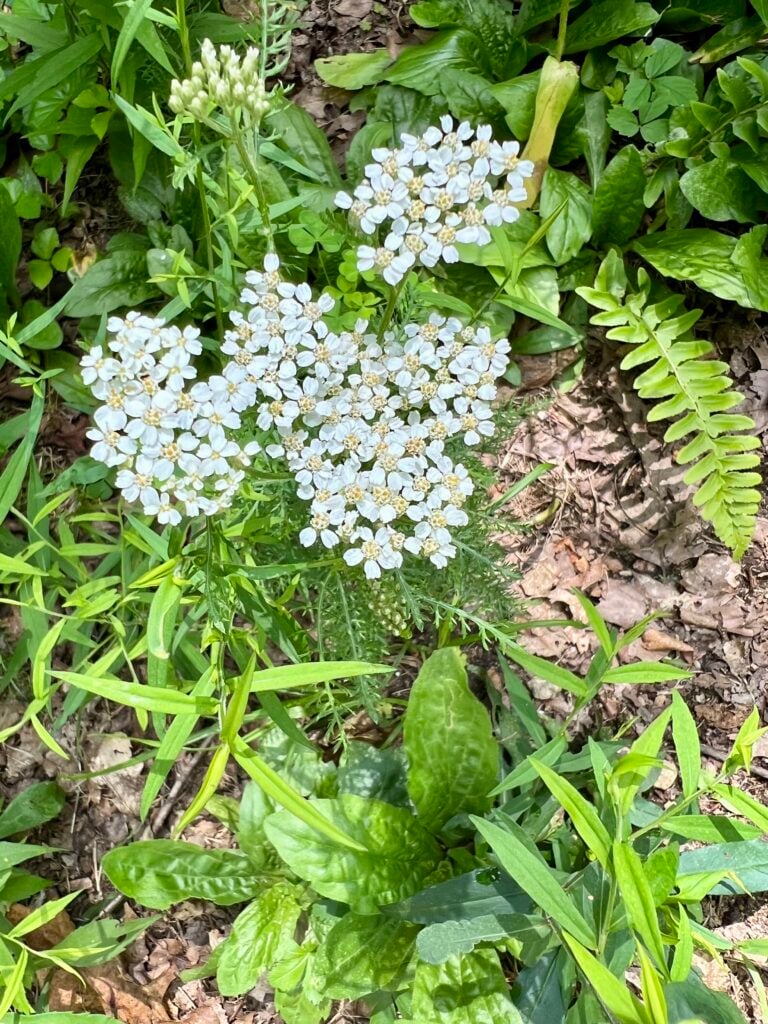
Harvesting Tips:
- Harvest in the morning after the dew has dried.
- Choose plants from clean areas, away from roadsides or sprayed fields.
- Cut the top 1/3 of the plant, including flowers and upper leaves.
- Dry bundles of yarrow upside down in a warm, dark, and well-ventilated space.
Once dried, store the yarrow in glass jars away from direct sunlight. You can use the dried herb in teas, tinctures, oils, or salves throughout the year.
Great! Here’s a blog post section specifically about drying yarrow with a dehydrator, featuring the LEM brand you use. It’s written in your homestead voice and can be seamlessly added to your post:
How I Dry Yarrow with a Dehydrator (LEM Brand)
While many herbalists like to air-dry their yarrow in bundles, I prefer the consistent, hands-off method of using my LEM dehydrator. It’s quick, easy, and preserves the color, aroma, and medicinal properties beautifully. It’s especially helpful during humid summer months when air-drying can get more difficult.
Step-by-Step: Drying Yarrow in a Dehydrator
- Harvest clean, healthy yarrow in the morning once the dew has dried. I like to snip the flower heads along with a few inches of stem and upper leaves.
- Give the plants a gentle shake to remove any insects or debris. If they’re dusty, rinse briefly and pat dry with a towel.
- Separate the flowers from the thicker stems, and lay everything in a single layer on the dehydrator trays. Don’t overcrowd—good airflow is key!
- Set your dehydrator to 95–105°F, which is the ideal range for drying herbs. My LEM dehydrator has an adjustable thermostat that makes this super easy.
- Let it run for 6–12 hours, checking periodically. Yarrow is ready when the leaves and petals crumble easily between your fingers.
- Store the dried yarrow in glass jars away from heat and sunlight. Label with the harvest date so you can rotate stock.
I love how clean and efficient the LEM dehydrator is, it keeps the herbs vibrant and makes the whole process feel so streamlined. If you’re looking to build up your home apothecary, I recommend investing in a quality dehydrator. This is a similar one to what I use HERE.
Tip: I dry small batches regularly throughout the season to keep my supply fresh and avoid losing herbs to mold or overexposure.
How to Make Yarrow Tea
Yarrow tea is a simple and effective way to experience its medicinal benefits. It has a slightly bitter, earthy taste, often balanced by blending with other herbs like lemon balm or chamomile.

Ingredients:
- 1–2 teaspoons dried yarrow (or a small handful of fresh)
- 1 cup boiling water
Instructions:
- Place the yarrow in a tea infuser or directly in your cup.
- Pour over the boiling water and cover.
- Steep for 10–15 minutes.
- Strain and sip slowly.
Use: Drink up to 3 cups per day during illness, menstrual discomfort, or digestive upset.
Yarrow Tincture Recipe
A tincture is a long-lasting herbal extract preserved in alcohol. It’s especially convenient for when you need yarrow on the go.
You’ll Need:
- Fresh or dried yarrow (flowers and leaves)
- 80–100 proof vodka
- Glass jar with lid
- Dropper bottle (for storage)
Instructions:
- Fill a jar halfway with dried yarrow (or ¾ full with fresh).
- Cover completely with vodka.
- Seal and label the jar with the date.
- Store in a cool, dark place for 4–6 weeks, shaking daily.
- Strain and pour into a dropper bottle.
Dosage: 10–30 drops as needed for fever, digestion, or menstrual relief. Always consult a healthcare professional before using herbs medicinally.
How to Grow Yarrow in Your Garden
Yarrow is a beautiful and beneficial plant to grow in your medicinal herb garden or flower bed.
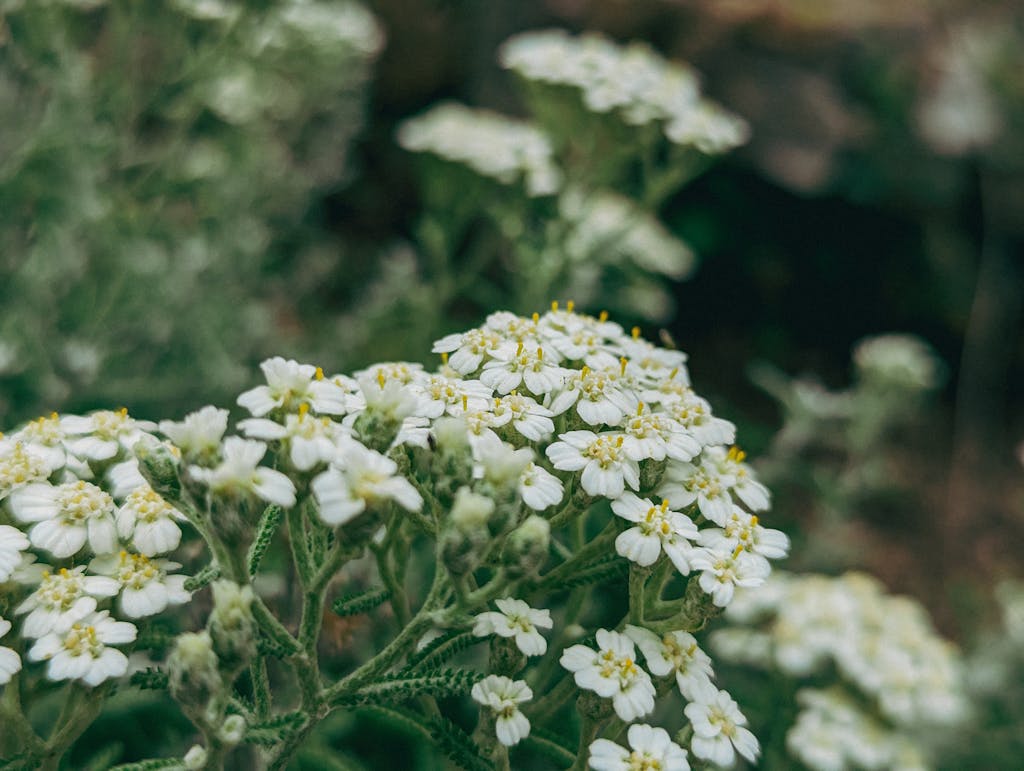
Growing Conditions:
- Sunlight: Full sun
- Soil: Well-drained, average soil (yarrow is drought-tolerant)
- Spacing: 12–24 inches apart
Once established, yarrow needs little care. It will self-seed and spread easily, attracting pollinators and beneficial insects to your garden. Some gardeners use it as a companion plant to improve soil and repel pests.
You can grow yarrow from seed, transplant wild starts, or divide clumps from existing plants in early spring or fall.
Precautions and Contraindications
While medicinal yarrow is generally safe for most people, there are a few precautions to keep in mind:
- Avoid use during pregnancy, as it may stimulate uterine contractions.
- Some people may experience an allergic reaction, especially those sensitive to plants in the Asteraceae family (like ragweed or chamomile).
- Yarrow may interact with blood thinners or diuretics, always consult your doctor before starting any herbal treatment.
Final Thoughts on Medicinal Yarrow
Yarrow is truly one of the most versatile and powerful plants in herbal medicine. From stopping bleeding and supporting digestion to easing fevers and balancing hormones, this humble wildflower has earned its place as a staple in my homestead apothecary.
Whether you’re sipping yarrow tea, making a salve, or growing it in your herb garden, this ancient remedy continues to offer healing for modern ailments.
Add yarrow to your herbal remedies, you’ll be amazed at how often you reach for it.
Shop This Post: Medicinal Yarrow
- Organic Medicinal Yarrow Seeds
Grow your own yarrow at home! These heirloom, non-GMO seeds produce vibrant, pollinator-friendly plants packed with medicinal benefits.
Buy Yarrow Seeds - Dried Yarrow Herb (Flowers & Leaves)
Perfect for teas, tinctures, or salves. Wild-harvested and carefully dried to retain potency. Great for your home apothecary.
Shop Dried Yarrow - Yarrow Herbal Salve
A soothing salve for minor cuts, rashes, bug bites, and bruises. Blended with other healing herbs like calendula and plantain.
Get the Salve - Yarrow Tincture (Alcohol-Free Available)
Easy-to-use, potent herbal extract for immune support, fever relief, and menstrual comfort. Great for on-the-go use.
Try the Tincture
FAQ: Medicinal Yarrow
Q: Can you eat yarrow?
A: Yes! Young yarrow leaves can be added in small amounts to salads or soups, though they are quite bitter. Medicinal use is more common than culinary.
Q: What parts of the yarrow plant are medicinal?
A: Both the flowers and the feathery leaves are medicinal. The flowers tend to be slightly stronger in effect, especially for fevers and wound care.
Q: Is yarrow good for skin?
A: Yes! Yarrow is anti-inflammatory, antiseptic, and astringent, perfect for cuts, rashes, acne, and even minor burns when used as an infused oil or salve.
Q: Can I use yarrow on pets?
A: Yes, but with care. Yarrow can be used for minor cuts or skin irritations on dogs or livestock, but always check with a holistic vet before internal use.
Have you ever used yarrow in your home remedies or grown it in your garden? Share your experience in the comments below!
The information provided in this blog post is for educational and informational purposes only and is not intended as medical advice. I am not a licensed healthcare provider, and the content shared here should not be used to diagnose, treat, cure, or prevent any disease.
Always consult with a qualified healthcare professional before starting any new herbal remedies, especially if you are pregnant, nursing, taking medications, or have any existing health conditions. Individual reactions to herbs can vary, and it’s important to listen to your body and seek personalized guidance when needed.
